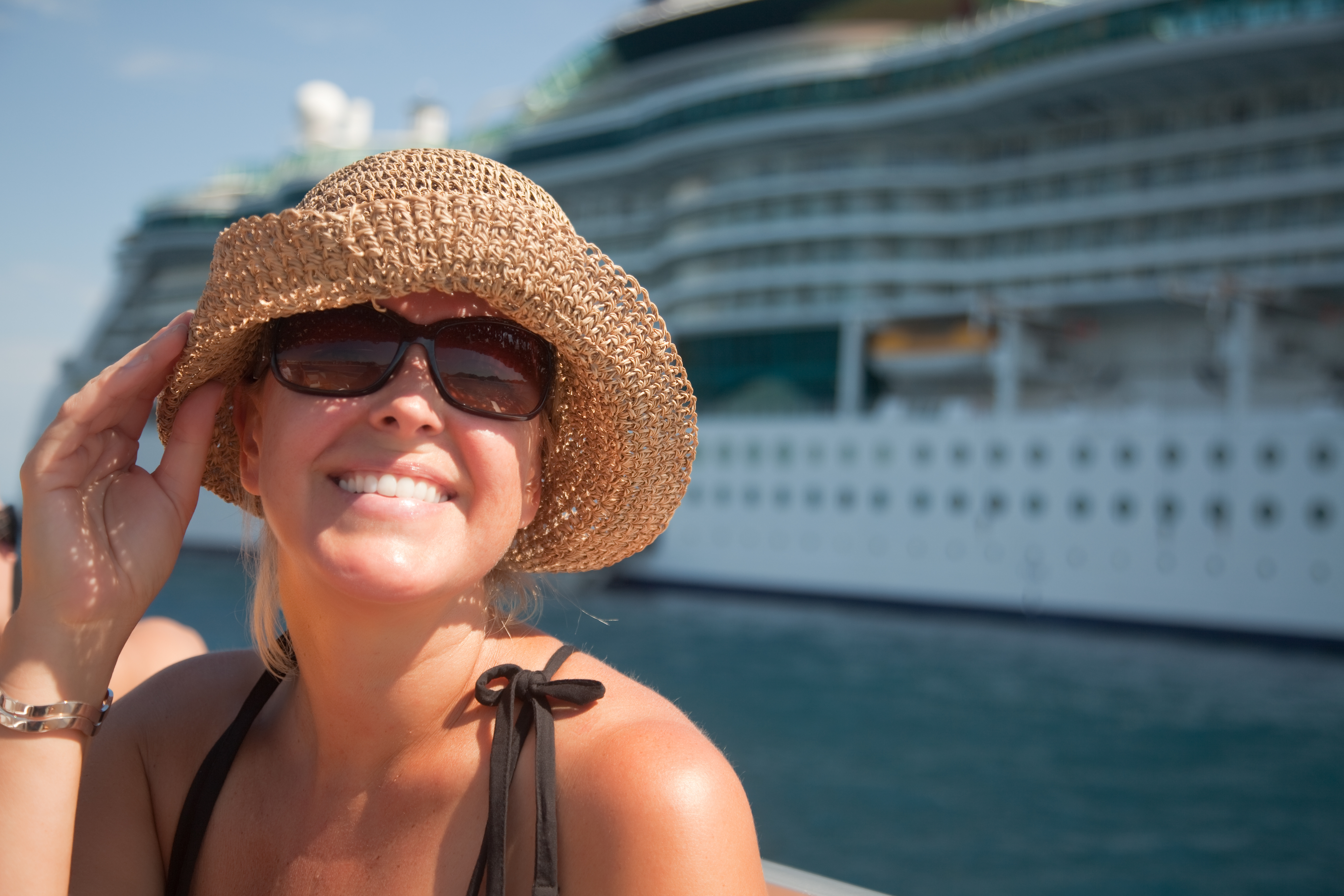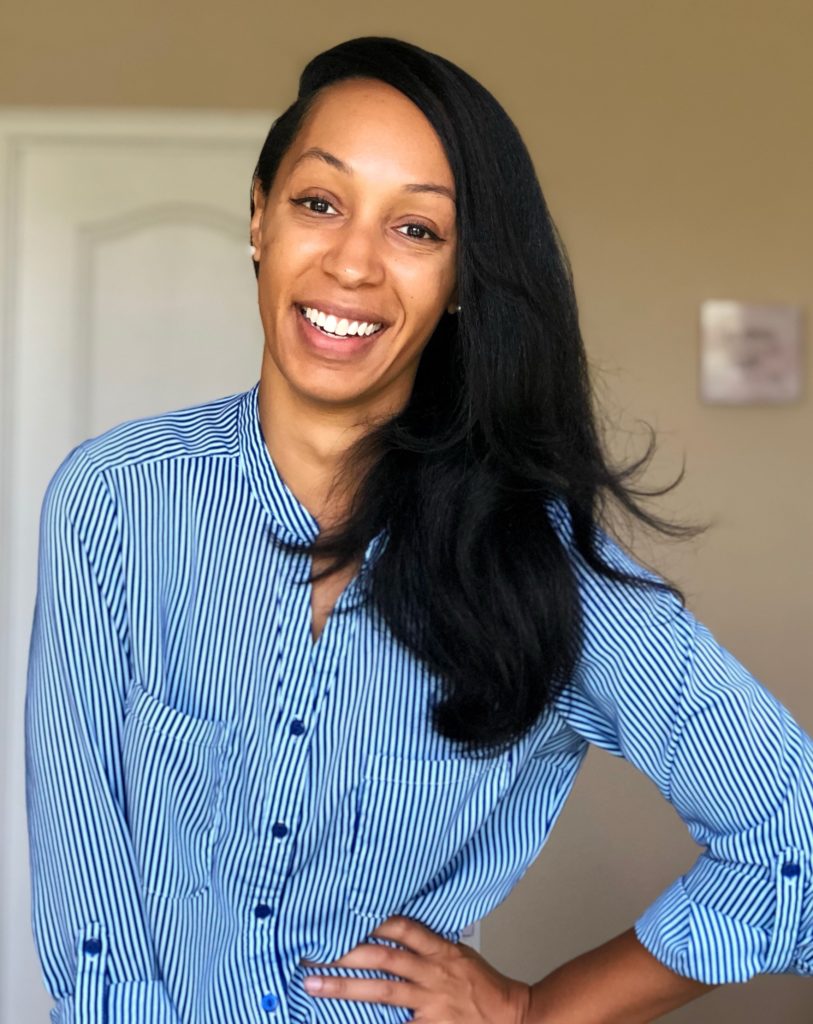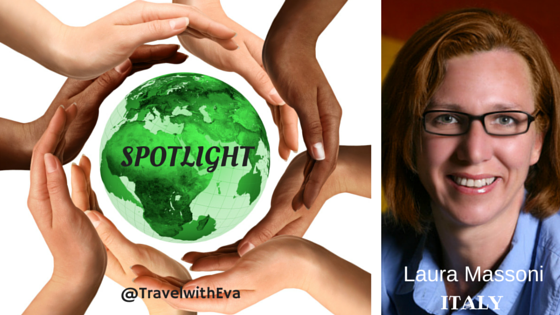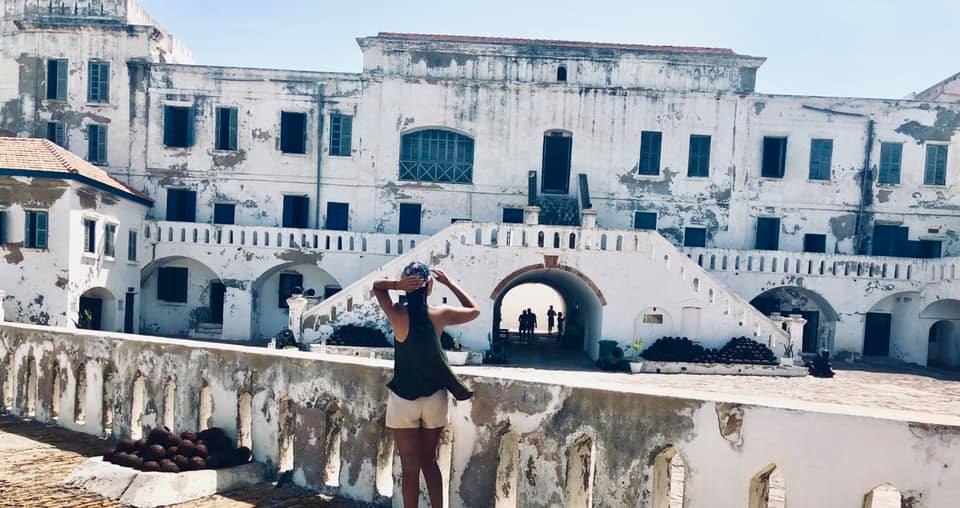
Joy’s Year Of The Return
For years, I wanted to travel back to the Motherland. Unfortunately there were so many negative mindsets that had been imposed on me concerning Africa that kept me from making that visit. Over the years, however, I have been feeling such a strong connection to the continent through growing in my own understanding of our ethnic history. So when my best friend who is a travel consultant decided to design a “heritage tour” to Ghana, I couldn’t resist passing up the opportunity! I am SO glad I went because I learned so much about our history and where so many of our cultural practices originated. My best friend was very intentional about supporting local Ghanaian business so we hired a wonderful country host Nana Kwadwo Agyemang Amankwa through Ghana Dipci Tours and he did not disappoint! I am also honored that we were able to visit during the highly anticipated “Year of Return” for descendants of the African diaspora.
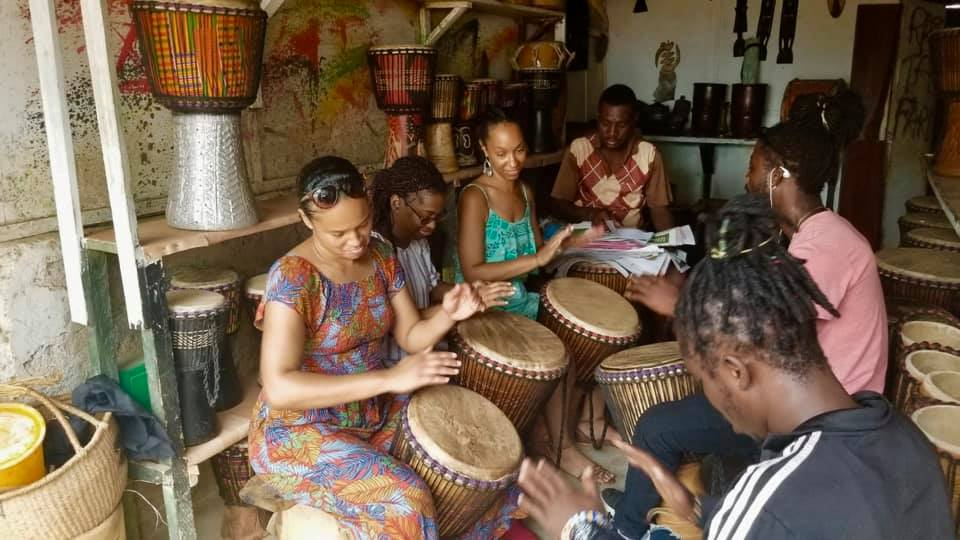
“African drums hold a special place in the history of Africa. In Western Culture the idea of drumming is nearly always associated with entertainment or just to add to the musical quality of a song. However, in Africa, drums hold a deeper symbolic and historical meaning.
Traditionally, the drum was the heartbeat, the soul of most African communities. Drums have been an intrinsic part of African life for centuries and for countless generations, an ancient instrument used to celebrate all the aspects of life.” https://blog.africaimports.com/wordpress/
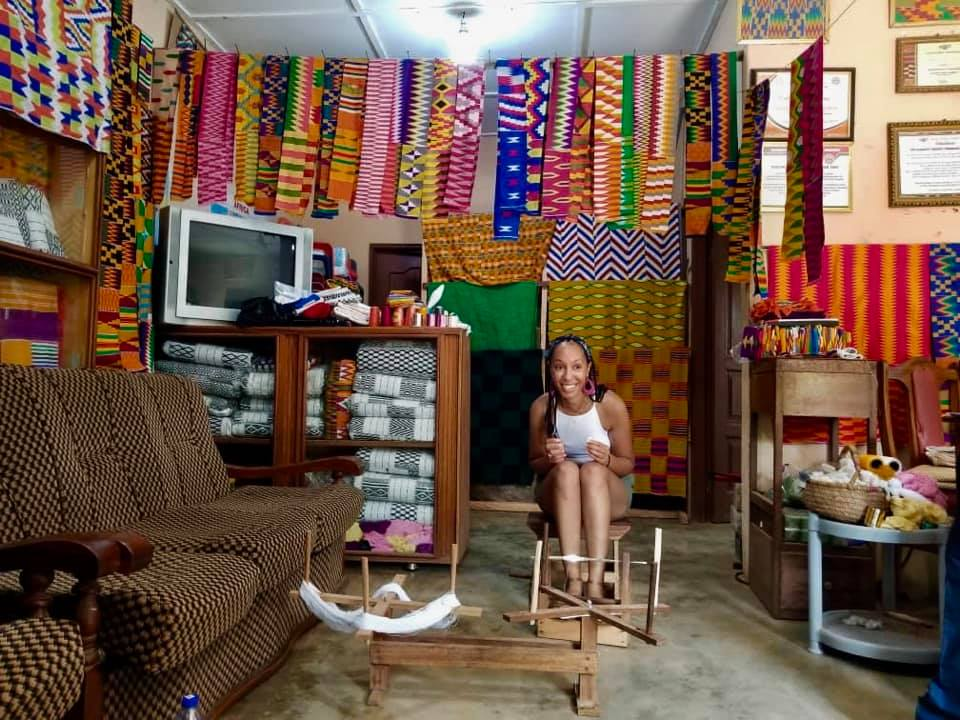
One aspect I truly love and admire about Ghanians is their passion for teaching anyone who wants to hear about their rich history, culture, and traditions. ???
For as long as we have worn these prints back in the US, little did we know the significance behind the designs in these fabrics. Each design is hand selected to convey a message to the onlooker. This coded language was hidden from outsiders but understood by the Ashanti people.

“Cape Coast Castle is one of about forty “slave castles”, built on the Gold Coast of West Africa by European traders. They were used to hold slaves before they were loaded onto ships and sold in the Americas, especially the Caribbean. The “gate of no return” was the last stop before crossing the Atlantic Ocean.” https://en.wikipedia.org/wiki/Cape_Coast_Castle
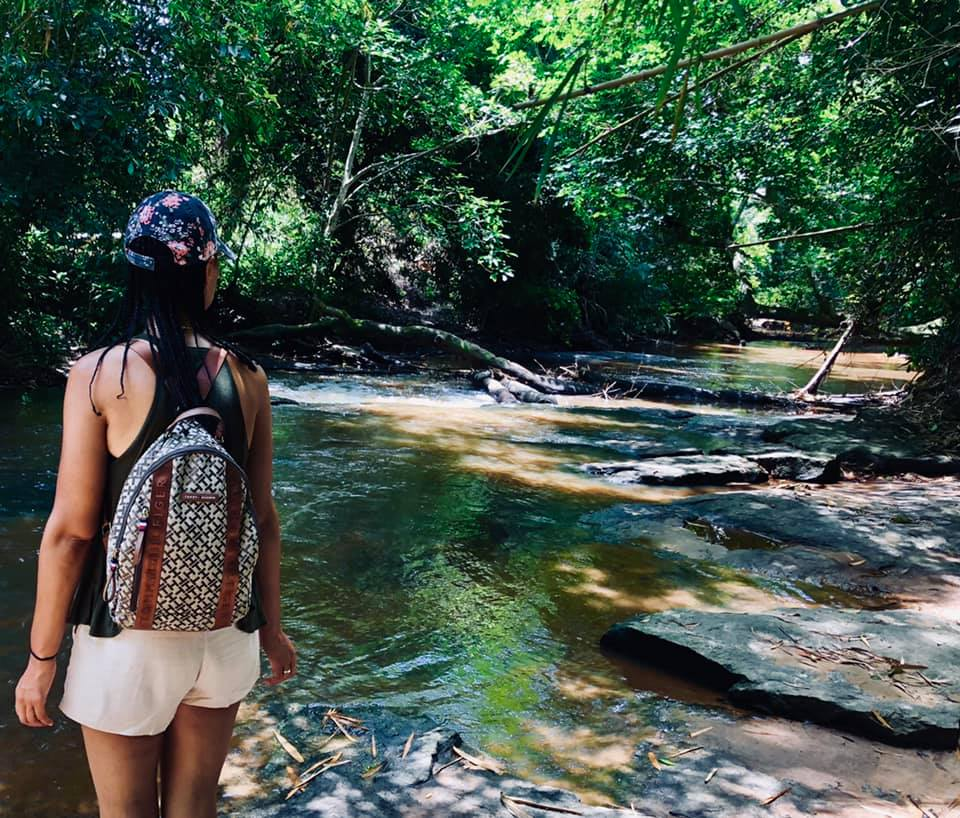
The Donko Nsuo River was such a surreal experience to see and touch the very rushing waters that countless Africans were “baptized” in before taking that long trek to the slave ships.
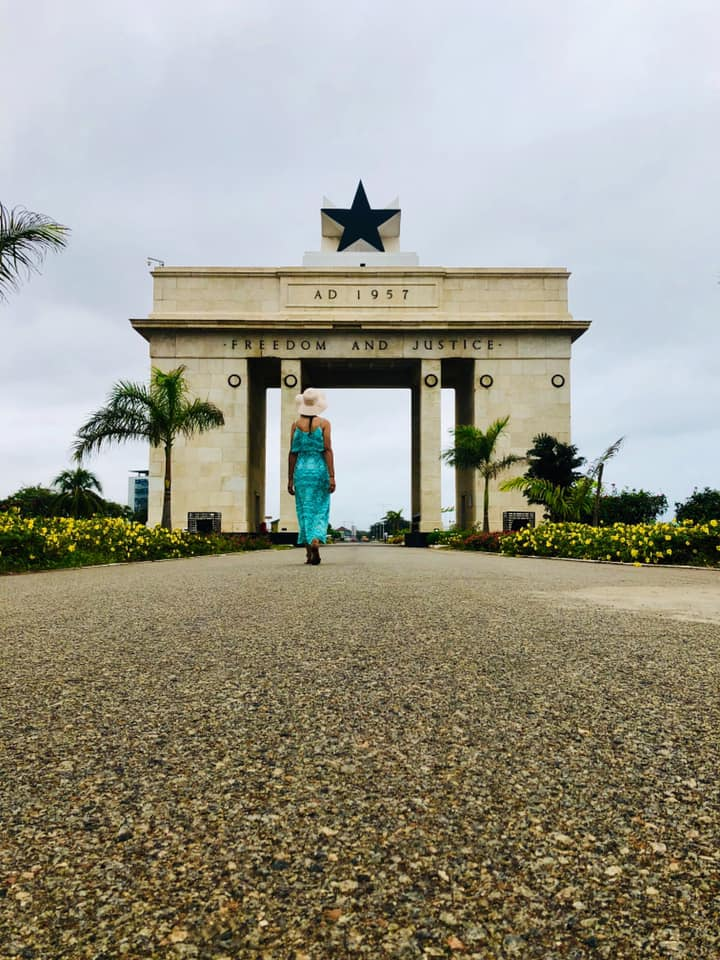
“I am in the knowledge that death can never extinguish the torch which I have lit in Ghana and Africa. Long after I am dead and gone, the light will continue to burn and be borne aloft, giving light and guidance to all people.” Epitaph on Nkrumah’s mausoleum in Nkroful, the village of his birth in southern Ghana.
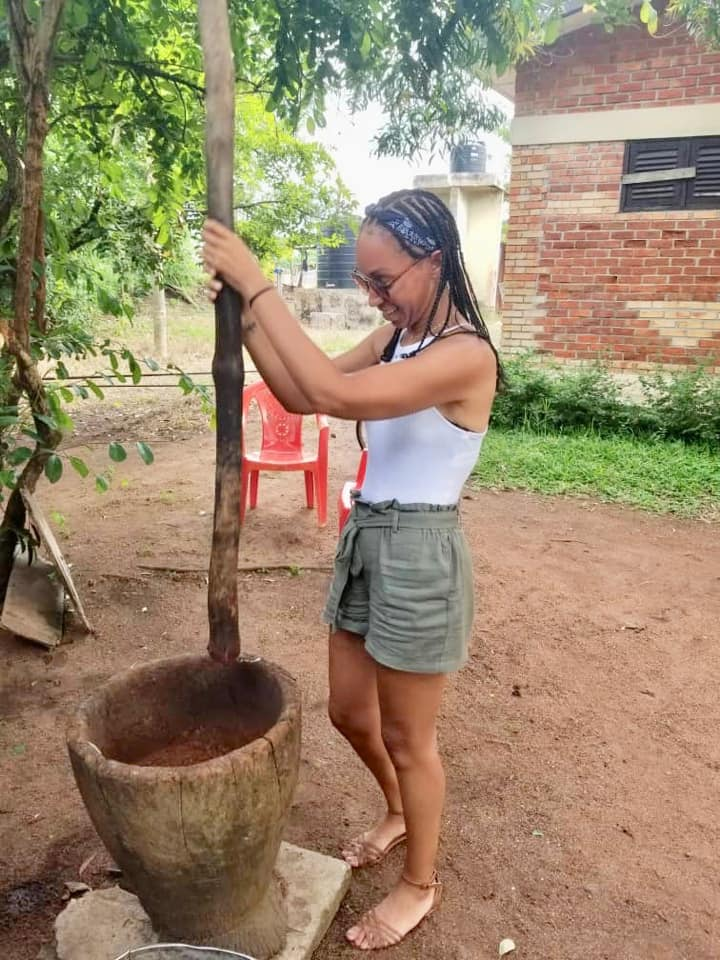
“Ntonso is the homeland of adinkra cloth and the only place in Ghana where traditional adinkra is made locally from scratch.” https://visitghana.com/attractions/ntonso-adinkra-cloth-village/
Of course no tour would be complete without showing us how they make the dye used on the cloths from scratch! Me giving the crushed bark a thorough beating which then goes through a process of boiling and fermentation.
I left Ghana understanding a better piece of myself and of my rich African heritage. I couldn’t help but to thank our country host time and time again for providing such an authentic experience not just into the sights, smells, sounds, and tastes of Ghana, but of its rich heritage and culture. Though I want to concentrate on visiting other countries of Africa, I will definitely visit Ghana a second time, maybe even next time with my two boys. It was such a humbling and grateful experience to literally be on the opposite shores of the world peering out into the sunset. From a place I thought I would NEVER ever visit. A place where my ancestors hoped and dreamed of their return. A hope for them and their descendants.
Thank you Joy for sharing your travel adventure with us!

